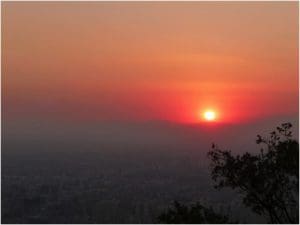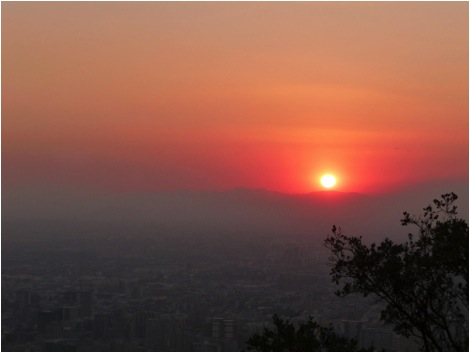
The sun is setting on the PGS International Sustainability Club’s blog series on this past January’s service-learning trip to Chile. Since the beginning of March, you have been treated to pieces on everything from the background of the trip to Santiago’s future as a smart city to what it means to go on an international service-learning trip. You have heard about our experiences enjoying the local pisco; our journey to the majestic Cajon del Maipo River Valley and the beautiful Cascada de las Animas eco-resort; an afternoon spent with the mother of a Presidian, whose life would make many a novel full of intrigue and spiritual growth; as well as our work to hone and develop the problem statement that took us to this beautiful country in the first place. So what’s next?
Unlike previous years’ trips to Nicaragua and Indonesia, which focused on the service part of service-learning, this year’s trip was about research. It was the opportunity to engage with a wide variety of stakeholders from across Chilean society in order to learn more about their unique energy situation. Using our learnings from our coursework at PGS we initially sought to answer the question:
“What might efficient, renewable, and distributed energy independence look like for stakeholders in Chile? How can we as students invite new perspectives and target capacity building to empower such a vision?”
Following a first week jam-packed with interviews with government officials, leading environmentalists, founders of renewable energy firms, academics, and many more, we found ourselves re-examining this problem statement. While it had brought us to Chile, was it truly the right question?
After hours of discussion in which we used aspects of IDEO.org’s Human-Centered Design process to distill key learnings from our interviews, we settled on a more focused and succinct version:
What might energy security look like for Chile that minimizes social and environmental risk?
Based on our work during this weekend spent amidst awe-inspiring natural beauty, we not only refined our problem statement, but we were able to identify important things that we felt were missing. A big part of this was making sure to get more voices from outside of Santiago. To this end, a small contingent from our group took overnight buses south to the Lakes District in order to meet with indigenous communities and other key rural stakeholders.
We closed our time in Chile with a social gathering in which we invited those we had interviewed to come together. Given that a major theme we heard time and again over the course of our two weeks was how siloed stakeholders were from each other, we saw this as a tangible step we could take towards being a part of helping Chile live into its energy future. While the turnout wasn’t what we had hoped for, it was a good first step in how to apply what we had learned.
The next challenge, as we flew the many hours home, was what to do with the pages and pages and pages of interviews that we had collected over our time there. Would they simply serve as a reminder of our trip and as a resource to call upon if we needed primary material for a paper? Or would they serve as the foundation for something more, something that would allow those not on the trip to learn along with us?
We chose the latter route, knowing that the energy challenges facing Chile are challenges facing much of the world. At the same time, we had to balance our desire to share our learnings as deeply as possible with the reality that we are graduate students whose time is at a premium. Where initially we held grand visions of writing a 30 or 40- page white paper that would explore all the intricacies and nuances of energy in Chile, we soon realized that such a goal was unrealistic outside of the classroom given the demands on us inside of it. So how to share what we learned and to bring others along on the journey of learning we had been experienced? So we shifted our focus to creating a shorter, but just as impactful, case study.
The case study, which we are still working on, seeks to introduce the facts on the ground as we saw them based on the myriad of interviews and our hours of research. This includes basic background on Chile and its current energy situation and then moves into a discussion of the different stakeholder groups that we focused on during our interviews. The case study then lays out the key issues and questions that we identified and leaves the reader with the challenge of answering for themselves what potential solutions they see. As an addendum, we are including the solutions that we came up with so that those using the case study can compare their ideas with ours. The hope is that when it is completed the case study will be a useful resource and tool for future Presidians (and other students) to learn more about this fascinating country and its unique place in the global energy discussion.

